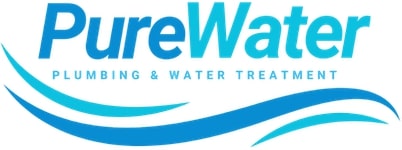Water is essential for life, but not all water is created equal. Whether it’s the tap water in your home or the water used for industrial purposes, the quality of water can vary greatly depending on location, source, and the processes it has undergone. That’s where water treatment comes in, ensuring that the water we use is safe, clean, and suitable for consumption and other needs. In this blog, we’ll explore the basics of water treatment, its importance, and the different methods used to ensure the water we use is of the highest quality.

What is Water Treatment?
Water treatment is the process of improving the quality of water by removing impurities, contaminants, and harmful microorganisms. The goal is to produce water that is safe to drink, use in daily activities, or discharge without posing a risk to human health or the environment.
Water treatment processes can vary depending on the source of the water (e.g., groundwater, rivers, lakes) and the intended use of the treated water (e.g., drinking water, industrial use, or irrigation).
Why is Water Treatment Important?
- Health and Safety: Clean water is crucial for good health. Untreated or poorly treated water can carry harmful bacteria, viruses, and parasites that can cause a range of diseases. Water treatment eliminates these risks, ensuring the water is safe to drink and use for other purposes.
- Removal of Contaminants: Water can contain various contaminants like chlorine, heavy metals (e.g., lead, mercury), pesticides, and chemicals that can be harmful over time. Water treatment effectively removes these substances, improving the taste and overall quality of the water.
- Environmental Impact: Properly treated water helps in maintaining the balance of natural ecosystems. Water that is used and then discharged without proper treatment can harm rivers, lakes, and oceans, affecting wildlife and plant life. Clean water treatment processes help mitigate this damage.
- Improved Taste and Smell: Often, untreated water can have an unpleasant taste or odor due to impurities like chlorine or sulfur. Through water treatment processes, these issues are resolved, making the water more palatable for consumption.
Common Water Treatment Methods
- Filtration: Filtration is one of the most common methods used to remove large particles, such as dirt, sand, and debris, from water. Different types of filters, including activated carbon filters, reverse osmosis filters, and sand filters, target specific contaminants, ensuring the water is clean and safe.
- Disinfection: Disinfection is a critical step in ensuring that water is free from harmful pathogens. Common disinfection methods include chlorination, UV (ultraviolet) light treatment, and ozone treatment. These methods kill or neutralize harmful microorganisms, ensuring that the water is safe for consumption.
- Water Softening: Hard water, which contains high levels of calcium and magnesium, can cause scale buildup in pipes and appliances, reducing efficiency and leading to potential damage. Water softeners use ion exchange processes to remove these minerals, making the water “softer” and extending the lifespan of plumbing systems and appliances.
- Reverse Osmosis (RO): Reverse osmosis is a highly effective water filtration process that removes dissolved solids, chemicals, and microorganisms from water by forcing it through a semipermeable membrane. RO systems are commonly used in residential settings for purified drinking water.
- Distillation: Distillation involves boiling water to create steam, which is then condensed back into water. This method is effective at removing most contaminants, including bacteria, salts, and heavy metals.
- Activated Carbon Treatment: Activated carbon filters are highly effective at removing chlorine, volatile organic compounds (VOCs), and other chemicals that affect the taste and odor of water. They work by adsorbing these contaminants onto the surface of the carbon.
Signs That Your Water Needs Treatment
Even though tap water is treated by municipalities, there are still certain signs that might indicate the need for additional water treatment at home. These include:
- Unpleasant taste or odor
- Cloudy or discolored water
- Staining on faucets, sinks, or laundry
- Scale buildup on appliances
- Health concerns related to waterborne diseases
Conclusion: The Need for Clean Water
Water treatment is an essential process for ensuring the water we use is safe, clean, and free of contaminants. From protecting your health to improving the taste and quality of your water, there are numerous benefits to using water treatment services. Whether it’s through filtration, softening, or disinfection, each treatment method plays a crucial role in providing high-quality water for your home or business.
At Pure Water, we are dedicated to offering expert water treatment services tailored to meet your needs. If you suspect your water isn’t as clean or pure as it should be, don’t hesitate to reach out for a consultation or water treatment solution that fits your requirements.
By ensuring clean, purified water in your home, you’ll not only improve your daily life but also safeguard the health of your family and the longevity of your plumbing system
